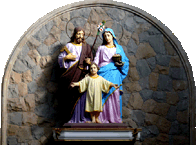|
The tree is imposing and grand, with a widening trunk and branches that spread far and wide horizontally. Its cool shade makes it an ideal place to rest.
The leaves are compound, with the last pair of leaflets being the largest.
The cicada insect feeds on the leaves, and towards evenings when the leaflets of the tree begin to droop, one can feel the insect droppings from the leaves falling like a shower of rain. This explains the name 'Rain Tree'.
The flowers resemble bright pink powder puffs and are very attractive. They bloom in summer and then turn into fleshy, chocolate brown pods. Some trees also flower all year long.
The leaves and pods are used widely as fodder for livestock during summer season. The pods of this tree contain seeds which have a sweet edible pulp, which is said to improve the quality of milk yielded by livestock.
This tree was first introduced in Sri Lanka and was then transported to India. It is usually planted as an avenue tree due to its branching and canopy cover.
IMPORTANT: The information on this website has been compiled from reliable sources, such as reference books. It is not a substitute for medical advice or treatment. Readers should always consult their physician before using or consuming a plant for medicinal purposes.
--- Click here for information about other trees on Holy Family Church campus ---
|
